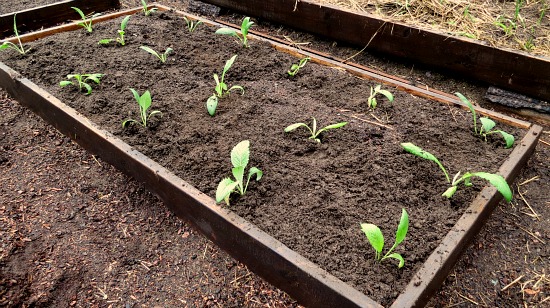
It is suitable for those who follow a low-calorie and low-fat diet: eaten raw in salads or even just boiled, cooked with acidulated water, it is tasty and nutritious. This virtuous vegetable lends itself to numerous culinary preparations. It can be consumed in the form of herbal tea, decoction or mother tincture for a purifying and detoxifying action. It is extremely used in the herbal field. In short, it is a real mine of precious substances for our body. It is rich in vitamins K and B6 and in essential minerals such as copper, calcium, potassium, iron, manganese and phosphorus, as well as flavonoid compounds antioxidants.


#Artichoke seedlings free
The its supply of vitamin C helps the body to develop resistance against infectious agents and free radicals. Contains vitamins and folic acid, which is very useful, among other things, during the period of pre-conception and in the early stages of pregnancy as it helps prevent neural tube defects in the newborn. The cynarin, of which it is rich, improves bile secretion, to the benefit of the liver. It represents an excellent source of fiber and helps in case of constipation reduces the levels of LDL cholesterol (the so-called "bad" cholesterol) by binding to it in the intestine and helping to reduce the risk of colon cancer by preventing the absorption of toxic substances. It is low in calories and fat 100 g of this vegetable provides only 47 calories. Nutritional and beneficial properties of the artichoke Paestum is an Italian product of excellence and has obtained the Protected Geographical Indication (PGI) from the European Union. Among the thorny varieties we remember the Ligurian and the Sardinian, among those without thorns the famous Romanesco. The most valuable autumn varieties are suitable for fresh consumption the spring ones are generally destined for the canning industry and are sold frozen or canned.

It has multiple varieties, classified according to size, color, the presence or absence of thorns and seasonality. Its scientific name is Cynara Scolymus and belongs to the thistle family (Asteraceae). Its use was already well known in antiquity, both in the Middle East and in Europe, among the ancient Greeks (who called it "Ankinara") as well as among the Romans, who knew and appreciated its medicinal qualities as well as its taste. + translation missing: en.general.icon_labels.toggle_menuĪrtichoke is a plant of a thousand virtues.


 0 kommentar(er)
0 kommentar(er)
